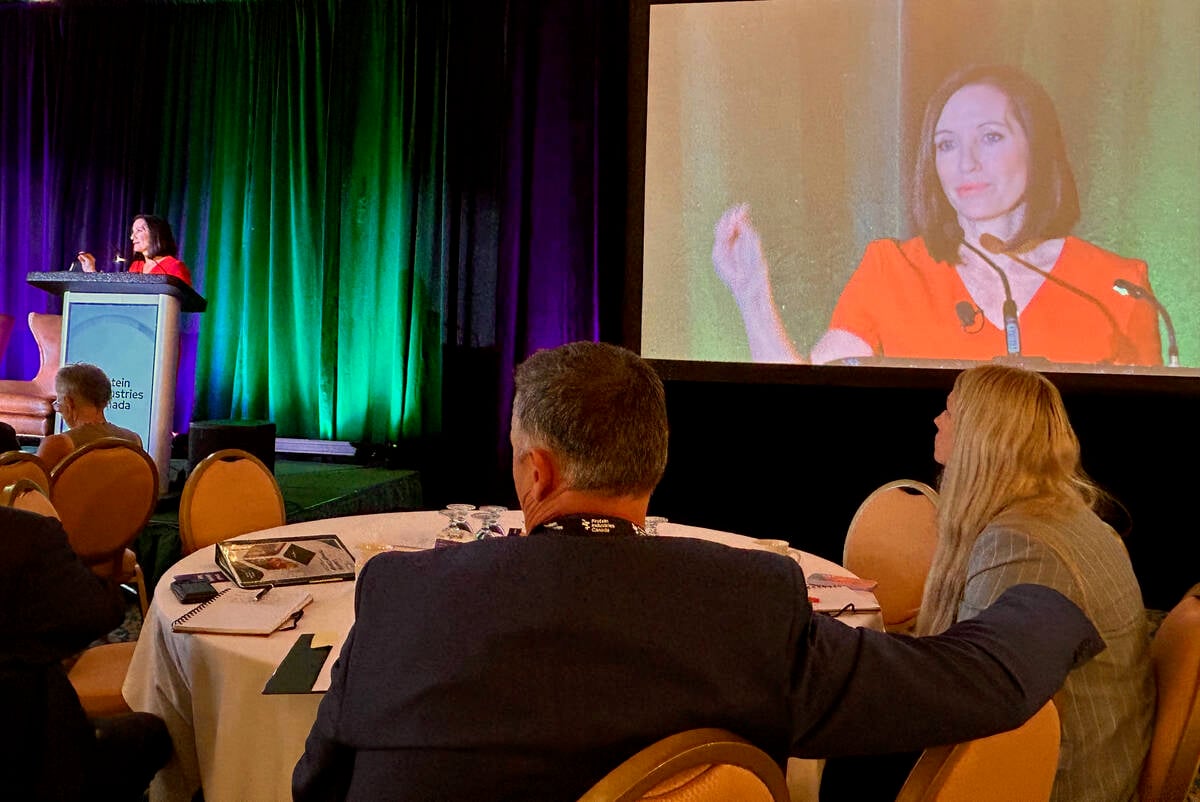DES MOINES, Iowa — Preparing for something that hasn’t happened in nearly 90 years isn’t at the top of a “to do” list for most livestock producers.
However, preparing for an outbreak of foot-and-mouth disease should get livestock producers’ attention because it could decimate the industry.
The U.S. National Pork Board, in a June 7 news conference at the World Pork Expo, said a foot-and-mouth outbreak could cause revenue losses of $12.8 billion annually for the U.S. pork and beef industries.
In addition, the disease would cause annual losses of $4.4 billion and $2.5 billion in the corn and soybean sectors, based on research done at Iowa State University.
Read Also

Canada told trade crisis solutions in its hands
Canadians and Canadian exporters need to accept that the old rules of trade are over, and open access to the U.S. market may also be over, says the chief financial correspondent for CTV News.
Given the scale of those losses, the National Pork Board is encouraging U.S. farmers to take preventive action and be part of a readiness plan in case foot-and-mouth or another foreign livestock disease appears in America.
“It can happen. Just because it hasn’t happened here for some time in the pork business doesn’t mean we should sit on our hands,” Iowa Agriculture Secretary Bill Northey said during the news conference. “It’s so important to have a response plan, ahead of time.”
The pork board is promoting a plan called the Secure Pork Supply. The basic idea is to enhance communication and co-operation so that pork producers, processors and federal and state agencies can agree on a response plan.
Producers who participate in the plan will need to implement sound biosecurity, use premises identification tags and keep detailed production records.
“(It) will provide business continuity to producers who enroll prior to an outbreak, which will allow them to be back in business faster than those who do not participate,” said Patrick Webb, the pork board’s director of swine health programs.
The U.S. hasn’t had foot-and-mouth since 1929, but it is present in Africa and Asia and was detected last year in Russia.
The disease, which is highly contagious, causes blisters around the mouth and hooves of cattle, sheep and pigs. The last case in Canada was 1952. A recent outbreak in the United Kingdom in 2001 is said to have cost that country more than US$10 billion.
The BBC has reported that illegally imported meat, often carried in luggage, could re-introduce the disease to the U.K.
“We know it’s running rife in Turkey, and with international travel it’s always a risk despite high surveillance,” said John Blackwell of the British Veterinary Association.
“There are strict import controls, but you can’t stop someone bringing back a ham sandwich from an exotic holiday and tossing it out the window.”
The U.S. plan is about more than foot-and-mouth. The pork industry wants to be ready for the appearance of any foreign disease, such as African swine fever.
“The National Pork Board is working diligently on prevention, detection and response and recovery from all foreign animal diseases,” said president Terry O’Neel.
North American hog producers have learned that vigilance is critical when it comes to pig diseases. In 2013, the porcine epidemic diarrhea virus hit hundreds of hog farms and infected millions of pigs across the U.S. It continues to infect farms in the U.S. and remains a problem in Manitoba. The virus has infected 10 hog farms in southeastern Manitoba since April 29.
Webb said the PED virus has been a hard lesson for the industry about the importance of biosecurity















